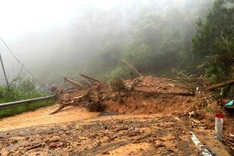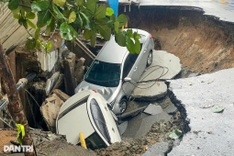
On Thursday evening, the Haiphong City People's Committee decided to move 5,400 households living in old apartment buildings and vulnerable areas to safer places in local schools, headquarters of ward people's committees or other public buildings.
The city has announced the closure of schools from September 6 to ensure safety. The facilities will be used to host evacuated people.
Some areas, including Cat Hai Island, Dinh Vu, and Do Son Tourist sites, have been identified as likely to be the hardest hit by the storm.
According to the Haiphong City Construction Department, the city's drainage system can only handle a maximum rainfall of 100 mm. Meanwhile, Storm Yagi is forecasted to bring a rainfall of up to 300 mm, threatening many residential areas with serious flooding.
Haiphong authorities have also called over 1,800 boats with over 5,200 crew operating in local waters to seek shelter before the storm arrives.
The neighbouring province of Thai Binh plans to move 18,600 residents from 7,700 households living in weak houses to safer places by 6 pm on September 6. Nearly 3,000 farmers living in coastal and riverside fish farms have also been asked to move to inland houses.
Over 3,000 farmers in Quang Ninh Province have also been asked to leave their fish farms by 4 pm on September 6.
All three localities are expected to issue a ban on all vessels going to the sea beginning Friday morning.
According to the National Centre for Hydro-Meteorological Forecasting, super Typhoon Yagi is currently about 620km southeast of Quang Ninh and will make landfall on September 7.
The third storm to enter the East Sea this year is sustaining maximum wind speeds up to 201km per hour near its eye.
By the morning of September 7, Yagi is forecasted to move west-northwest at about 15-20km per hour and enter the north of the Gulf of Tonkin, about 160km east-southeast of Quang Ninh.
By 4 pm the same day, the typhoon is predicted to move west-northwest at about 20km per hour and gradually weaken as it approaches the northeastern mainland.
By 4 pm on September 8, Yagi will move west-northwest at about 20 km per hour and abate into a low-pressure area in the northwest region.




















